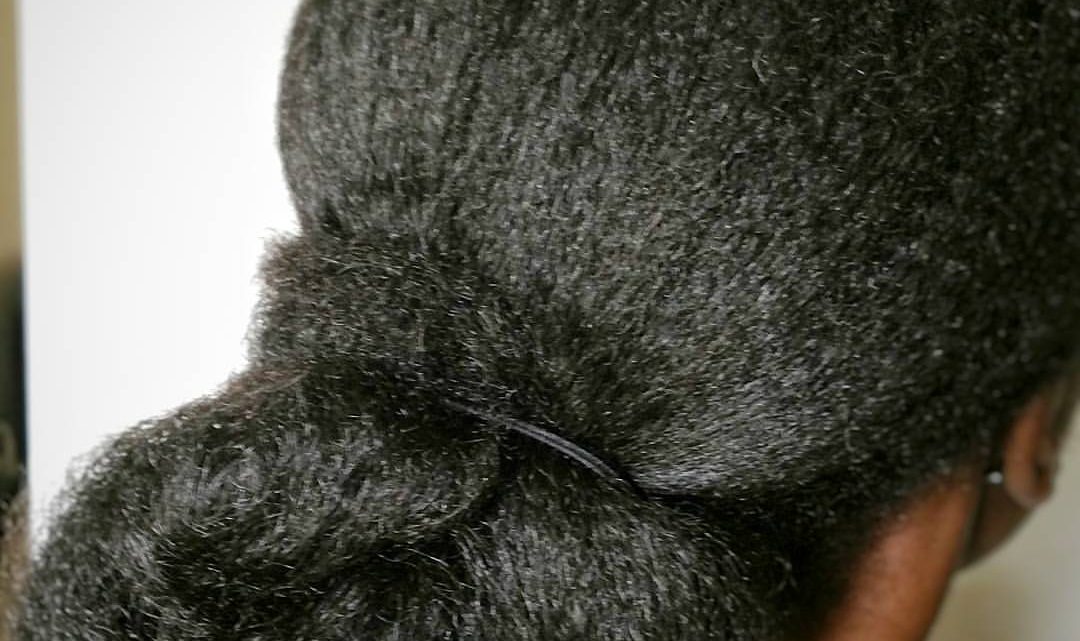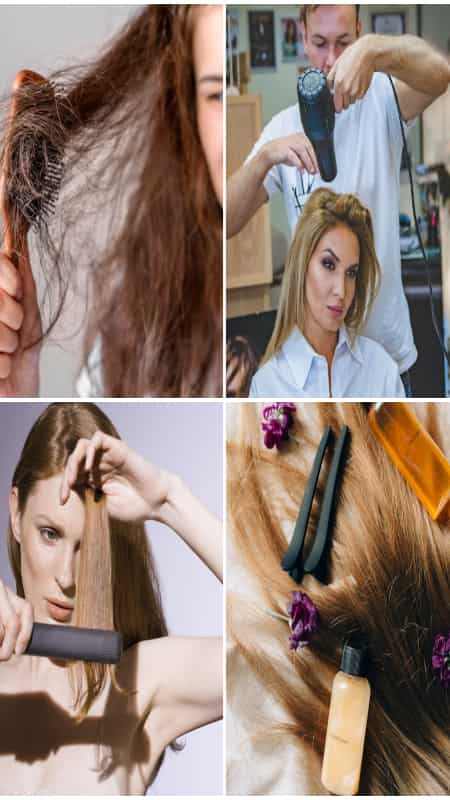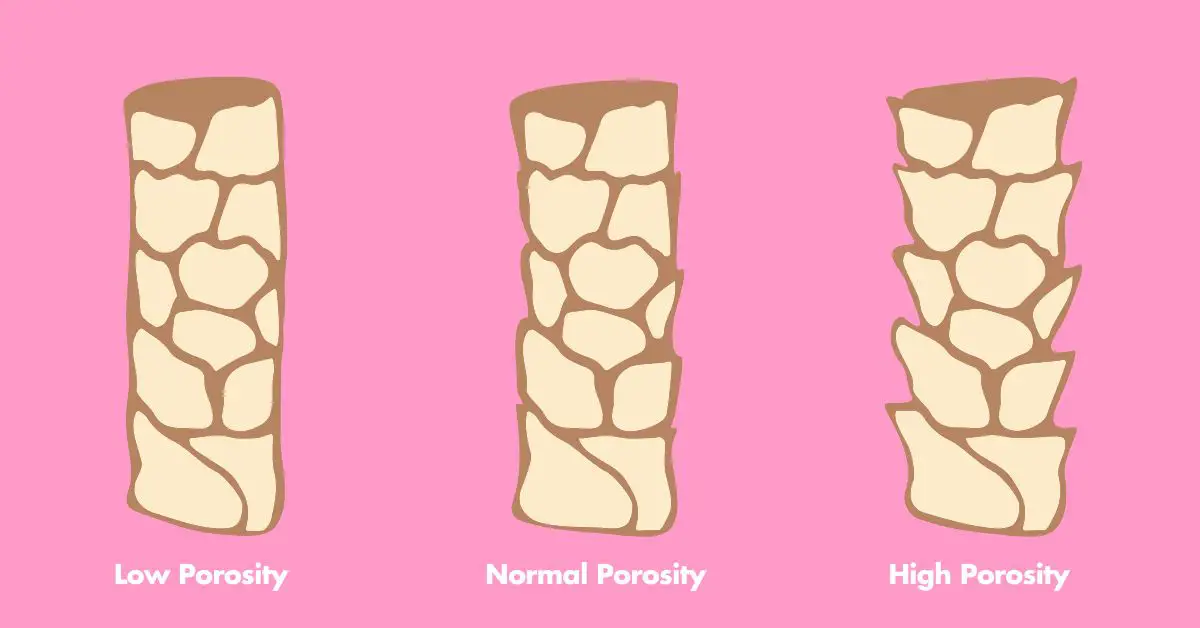7 Signs of Heat-Damaged Hair and How to Fix It
Are you noticing changes in your hair texture and overall health? If you frequently use heat styling tools like straighteners, curling irons, and blow dryers, you might be experiencing the detrimental effects of heat damage. Understanding the signs and implementing the right solutions is crucial for restoring your hair’s health and vibrancy. For more comprehensive hair care tips and products, visit hairy.cartlab.web.id. Heat styling, while offering convenience and versatility, can lead to significant damage if not approached carefully. This article will guide you through identifying the tell-tale signs of heat-damaged hair and provide effective strategies to repair and prevent further harm. Learning to care for your hair properly is an investment in its long-term health and beauty.
Heat damage is a common hair concern, often stemming from the overuse of high-heat styling tools. The high temperatures can disrupt the hair’s natural protein structure, leading to a range of problems. Understanding the underlying causes and effects is the first step towards effective treatment and prevention. Regular use of heat styling tools without proper protection can lead to irreversible damage, necessitating professional intervention in severe cases. This article aims to empower you with the knowledge and tools to identify and address heat damage effectively.

1. Increased Brittleness and Breakage

One of the most noticeable signs of heat-damaged hair is increased brittleness and breakage. Heat weakens the hair shaft, making it prone to snapping and splitting. This often manifests as increased shedding, difficulty in brushing, and a generally rougher texture. The hair feels less smooth and more prone to tangling. You might notice more hair strands on your brush or in the shower drain than usual. This is a clear indication that your hair needs immediate attention and repair. If you’re experiencing excessive breakage, consider reducing your heat styling frequency and incorporating deep conditioning treatments.
How to fix it:
- Reduce heat styling: Try to minimize the use of heat styling tools. Air drying is always the gentlest option.
- Use heat protectant sprays: Always apply a heat protectant spray before using any heat styling tool. This creates a barrier between the heat and your hair, minimizing damage.
- Regular trims: Get regular trims to remove split ends and prevent further breakage. This keeps your hair looking healthy and prevents the damage from traveling up the hair shaft.
- Deep conditioning treatments: Use deep conditioning treatments once or twice a week to hydrate and strengthen your hair. Look for products containing ingredients like keratin, argan oil, or shea butter. These treatments help replenish moisture and repair damaged hair cuticles.
2. Dryness and Dehydration

Heat styling strips the hair of its natural moisture, leading to dryness and dehydration. This results in dull, lifeless hair that lacks its usual shine and bounce. The hair might feel rough, straw-like, or even brittle to the touch. Dry hair is more susceptible to breakage and damage, making it crucial to address this issue promptly. Hydration is key to restoring the health and shine of your hair. If you’re struggling with dry hair, consider incorporating hydrating hair products and adjusting your hair care routine.
How to fix it:
- Hydrating shampoos and conditioners: Use shampoos and conditioners specifically designed for dry and damaged hair. Look for products containing moisturizing ingredients like hyaluronic acid, glycerin, and panthenol.
- Leave-in conditioners: Apply a leave-in conditioner after washing your hair to provide extra hydration and protection.
- Hair masks: Use deep conditioning hair masks once or twice a week to intensely hydrate and nourish your hair. Consider making your own mask with natural ingredients like avocado or coconut oil.
- Drink plenty of water: Hydration starts from within. Make sure you’re drinking enough water throughout the day to keep your hair and body properly hydrated. For more tips on internal hair hydration, check out our article on “How to Hydrate Your Hair From the Inside Out” at hairy.cartlab.web.id/how-to-hydrate-your-hair-from-the-inside-out.
3. Loss of Elasticity and Shine

Heat damage significantly reduces the elasticity of your hair. Healthy hair has a natural bounce and flexibility, whereas heat-damaged hair becomes stiff and lacks its usual springiness. This is because the heat alters the hair’s protein structure, making it less resilient. The loss of elasticity often goes hand-in-hand with a loss of shine, leaving the hair looking dull and lifeless. Restoring elasticity requires a combination of hydration and gentle care.
How to fix it:
- Protein treatments: Incorporate protein treatments into your hair care routine to strengthen and repair damaged hair. Protein helps rebuild the hair’s structure and restore elasticity.
- Avoid tight hairstyles: Tight hairstyles like ponytails and braids can further damage already weakened hair. Opt for looser styles that don’t put excessive stress on your hair.
- Low-heat styling: If you must use heat styling tools, use them on the lowest effective heat setting.
4. Frizz and Unmanageability

Heat damage can disrupt the hair cuticle, leading to increased frizz and unmanageability. The raised cuticles allow moisture to penetrate the hair shaft more easily, resulting in frizz and a generally unruly appearance. This makes it difficult to style your hair and maintain a smooth, sleek look. Addressing frizz requires both hydration and smoothing techniques.
How to fix it:
- Anti-frizz serums and creams: Use anti-frizz serums or creams to smooth down the hair cuticles and reduce frizz.
- Silk or satin pillowcases: Sleeping on silk or satin pillowcases can help reduce friction and prevent frizz.
- Humidity control: On humid days, use anti-humidity products to protect your hair from moisture absorption.
5. Split Ends and Flyaways

Split ends are a common sign of heat damage, particularly if you frequently use high-heat styling tools. The heat weakens the hair shaft, causing the ends to split and fray. This leads to a generally unkempt appearance and can make the hair look thinner and less healthy. Regular trims are essential to prevent split ends from traveling up the hair shaft and causing further damage.
How to fix it:
- Regular trims: Get regular trims to remove split ends and prevent them from causing further damage. Aim for trims every 6-8 weeks.
- Avoid brushing wet hair: Wet hair is more vulnerable to breakage. Use a wide-tooth comb to detangle wet hair gently.
- Minimize manipulation: Avoid excessive touching and manipulation of your hair, as this can exacerbate split ends.
6. Changes in Hair Texture

Heat damage can significantly alter the texture of your hair. Your hair might become coarser, rougher, or even thinner than it was before. This change in texture is often accompanied by other signs of heat damage, such as dryness, brittleness, and frizz. Addressing the underlying causes of heat damage is crucial to restoring your hair’s natural texture.
How to fix it:
- Deep conditioning: Regular deep conditioning treatments can help restore moisture and improve the overall texture of your hair.
- Olaplex treatments: Consider professional Olaplex treatments, which are specifically designed to repair damaged hair bonds.
- Hair growth supplements: In some cases, hair growth supplements can help improve hair health and promote thicker, stronger hair.
7. Color Fading (if colored hair)

If you have colored hair, heat damage can accelerate color fading. The heat can strip the color molecules from the hair shaft, leading to a duller, less vibrant color. Protecting your color-treated hair from heat is crucial for maintaining its vibrancy.
How to fix it:
- Color-safe products: Use color-safe shampoos, conditioners, and styling products to help protect your color from fading.
- Color-enhancing treatments: Use color-enhancing treatments or glosses to refresh your hair color and add shine.
- Limit heat styling: Minimize the use of heat styling tools to prevent further color fading.
If you’re looking for stylish ways to manage short hair, check out our article on “Tips to Style Short Hair for Volume” at hairy.cartlab.web.id/tips-to-style-short-hair-for-volume. For those with thick hair considering a change, explore our guide on “7 Hair Color Ideas for Thick Hair + Best Cuts” at hairy.cartlab.web.id/7-hair-color-ideas-for-thick-hair-best-cuts.
Conclusion
Recognizing the 7 Signs of Heat-Damaged Hair and How to Fix It is the first step towards restoring your hair’s health and beauty. By understanding the causes and implementing the recommended strategies, you can effectively repair damage and prevent further harm. Remember that patience and consistency are key when treating heat-damaged hair. For more information and resources, visit our comprehensive guide on 7 Signs of Heat-Damaged Hair and How to Fix It at 7 Signs of Heat-Damaged Hair and How to Fix It. Prioritizing gentle hair care practices and minimizing heat styling will contribute significantly to the long-term health and vibrancy of your hair.
(Remember to replace the bracketed image placeholders with actual images.)






Comments